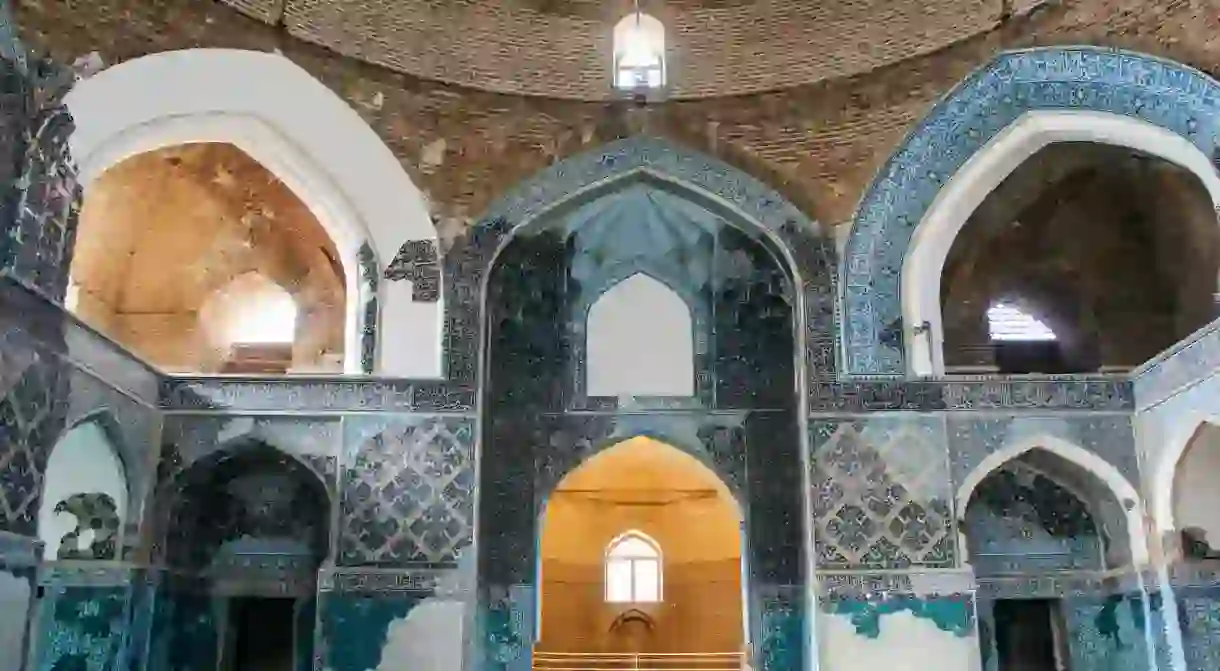The Story Behind the Famous Blue Mosque in Iran

There’s no doubt that among the many highlights in Iran are the exquisite mosques. The majestic grandeur of their lofty domes, symmetrical arches, and glorious tiles are the subject of visitors’ admiration. Vying for the attention given to the masterpieces in Esfahan and Shiraz is one mosque with a tragic past. Read on to discover the story behind Iran’s famous Blue Mosque.
In the Azeri Turkish-speaking city of Tabriz, in the northwestern province of East Azerbaijan, is the historic Blue Mosque, also known as Goy Masjed in Azeri or Masjed Kabood (literally “dark blue/bruised mosque” in Persian). Constructed in 1465 by order of Jahan Shah, a ruler of the Kara Koyunlu dynasty that made Tabriz the capital, it was once one of the most famous buildings of its time.


Standing in front of the imposing entrance, what is sure to strike visitors most are the patchy walls missing magnificent blue tiles from which the mosque derives its name. These are, in fact, scars the mosque still bears from the damage it suffered from a massive earthquake in 1779. Though reconstruction efforts have been underway since 1973, they remain incomplete.





Despite the missing tiles, many of which are displayed in the back of the mosque, there are splendid examples of fine Islamic calligraphy inside. Diverse Kufic and Thuluth scripts as well as various arabesque and geometric patterns designed by Nematollah Ibn Mohammad Elbavvab, a famous calligrapher, adorn the walls and become even more eye-catching against the neutral brick domes. Garduneh mehr, or Mithra’s wheel, more commonly known as the “swastika” in the west, run up and down the walls near the entrance. This ancient auspicious symbol for the revolving sun and infinity is also visible in other mosques throughout Iran, most notably in Yazd’s Jameh Mosque. The southern part of the Blue Mosque holds the mausoleum and tomb of Jahan Shah, and the red brick archways around it are reminiscent of Tabriz’s historic bazaar nearby.





Apart from its unique architecture and history, strategically placed windows illuminate the interior, allowing photography enthusiasts to play with shadow and light, all of which make the Blue Mosque a must-see during anyone’s visit to Tabriz.


















